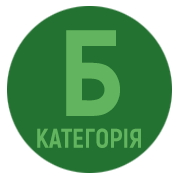ASSESSMENT OF ALLELIC AND GENOTYPE DIVERSITY OF COWS OF THE ENDANGERED BROWN CARPATIAN BREED BY SOME PRODUCTIVITY GENES
DOI:
https://doi.org/10.32782/naturaljournal.6.2023.3Keywords:
cows, genes, thyroglobulin, growth hormone, alleleAbstract
The development of modern molecular genetics makes it possible to identify genes that control quantitative and qualitative productive traits of farm animals. The article presents the results of the analysis of allele frequencies and genotypes for candidate genes for meat productivity: thyroglobulin (TG5) and gomatotropin (GH) in animals of the Brown Carpathian breed, which, according to FAO, is under threat of extinction. Today, the mother stock of the Brown Carpathian breed is bred only in private peasant farms. The thyroglobulin gene (TG5) was considered as a functional and positional gene – a candidate for meat marbling due to its influence on fat metabolism. Growth hormone regulates growth and development, initiates and maintains meat production, meat quality. The study used 30 samples of DNA isolated from the venous blood of brown Carpathian cows using the «DNA Sorb-B kit» (AmpliSens). Genotyping was performed using polymerase chain reaction (PCR-RFLP) polymorphism analysis of restriction fragment lengths. As a result of the research, it was found that the polymorphism of the TG5 and GH genes is represented by alleles TG5T, TG5C and GHL, GHV and, respectively, by the genotypes TG5TT, TG5TC, TG5CC and GHLL, GHLV, GHVV. For the TG5 gene, an amplified fragment of 548 bp. treated with PsuI restriction enzyme. The high frequency of the TG5T allele was 0.665 and the slightly lower frequency of the TG5C allele was 0.335. When studying the GH gene, the amplification product (223 bp) was treated with the restriction enzyme AluI. It was found that the GHL allele (0.64) and the GHLL homozygous genotype (0.50) were more frequent. The share of homozygous genotypes for both genes was significantly high and amounted to 90% for the TG5 gene, and 73% for the GH gene. The Brown Carpathian breed is one of the few local breeds of domestic cattle, so the emphasis on its carrying of selection-valuable genotypes can attract attention and provide an opportunity to preserve this valuable Ukrainian breed. It can be effectively used for breeding in both dairy and meat farms. The genetic potential of the Brown Carpathian is not exhausted.
References
Копилова К.В., Копилов К.В., Арнаут К.О. Генетична структура бугаїв різних порід великої рогатої худоби за локусами кількісних ознак. Вісник аграрної науки. 2012. №2. С. 47–49.
Мохначова Н.Б. Вивчення генетичної структури популяції української аборигенної лебединської породи корів. Acta Carpatica. 2023. № 1. С. 50–58. https://doi.org/10.32782/2450-8640.2023.1.6
Alison V. E. Marker – assisted selectionin beef cattle. UC Davis. 2007. P. 1–2.
Barendse W, Bunch R, Thomas M, Armitage S, et al. The TG5 thyroglobulin gene test for a marbling quantitative trait loci evaluated in feedlot cattle. Aust J ExpAgr. 2004. Vol. 44(7). P. 669–674. https://doi.org/10.1071/EA02156
Bennett G.L., Shakelford T.L., Wheeler T.L., King D.A., Casas E., Smith T.P.L. Selection for genetic markers in beef cattle reveals complex associations of thyroglobulin and casein 1-S1 with carcass and meat traits. J. Anim. Sci. 2013. Vol. 91(2). P. 565–571.
Lee J.H., Lee Y.M., Lee J.Y., Oh D.Y., Jeong D.J., Kim J.J. Identification of single nucleotide polymorphisms (SNPs) of the bovine growth hormone (bGH) gene asociated with growth and carcass traits in hanwoo. Asian Australas. J AnimSci. 2013. Vol. 26(10). P. 1359–1364. https://doi.org/10.5713/ajas.2013.13248
M. C. Lucy, S. D. Hauser, P. J. Eppard, G. G., Krivi, J. H. Clark, D. E. Bauman, R. J. Collier. Variants of somatotropin in cattle: gene frequencies in major dairy breeds and associated milk yield. J. Domest. Anim. Endocrinol. 1993. Vol.10(4). P. 325–333. https://doi.org/10.1016/0739-7240(93)90036-b.
Molecular genetic characterization of animal genetic resources. FAO Animal Production and Health Guidelines. № 9. Rome, Italy : FAO of the UN, Commission on Genetic Resources for Food and Agriculture, 2011. 87 p.





